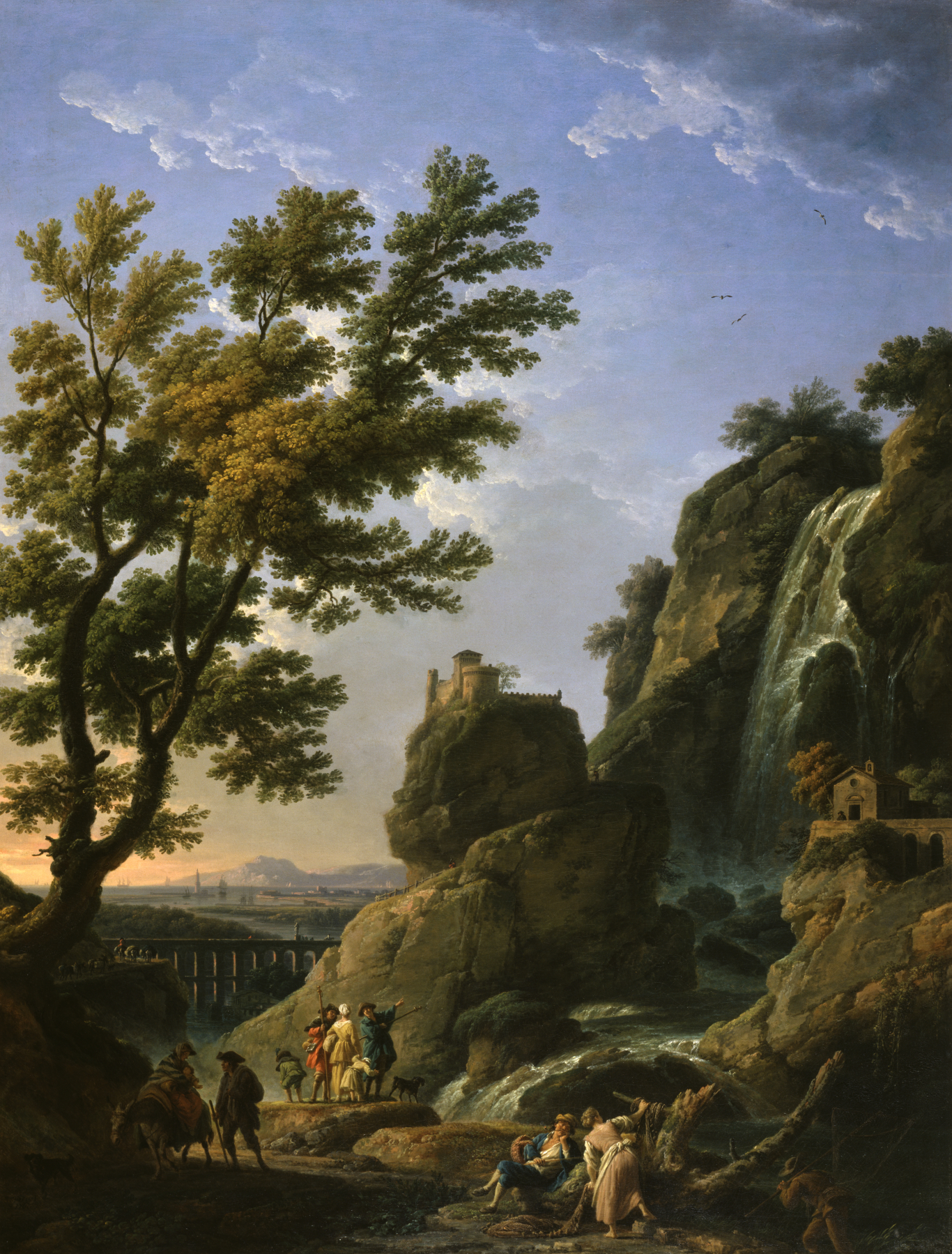Landscape with Waterfall and Figures
(18th and 19th Centuries )
At the age of twenty Vernet left his native Avignon for a lengthy stay in Rome where he devloped a style of idealized landscape painting derived from the 17th-century classical traditions of Claude Lorrain and Salvator Rosa. Not until 1762 did he settle in Paris, meeting with success there painting marine scenes and "picturesque" views that recalled his Italian sojourn as well as reflected a debt to Dutch landscape painting. His work was admired by wide international clientele. Scenes with cascades of waterfalls loosely based on the famous Italian sites of Tivoli and Terni were painted by Vernet throughout his career, and several are recorded for the year 1768.
This handsome painting was commissioned for an 18th-century country house located in Danson Park, England, that was designed by the architect Robert Taylor for the English merchant John Boyd in 1766. Vernet was the leading landscape painter of the 18th century. His idealized compositions, loosely inspired by the Italian countryside, were much prized as souvenirs of the so-called "Grand Tour" of Italy made by the elite to acquire cultural sophistication. In this landscape, Vernet evokes the feel of the Italian countryside, which he has adorned with picturesque ruins and lively figures, without actually re-creating any specific time or place.
This work combines all the typical elements of Vernet's ideal views. As tourists gawk at the waterfall, picturesque peasants go about their business. The perfectly calculated balance between the large tree, the harsh rocky face of the cliff, and the sun-drenched vista beyond the aqueduct evokes the notion of the sublime which figured so prominently into the 18th century.
Inscription
Provenance
Provenance (from the French provenir, 'to come from/forth') is the chronology of the ownership, custody, or location of a historical object.
Sir John Boyd, 1st Baronet (1718-1800), Danson, December 1766, by commission; Sir John Boyd, 2nd Baronet (1750-1815), by inheritance; John Johnston (1745-1828), 1805, by purchase [1]; Anna Johnston (his wife, died 1860), by inheritance, 1828 [2]; Alfred Bean (1823-1890), by purchase, 1863 [3];The Ehrich Galleries, New York, 1929-31; Juliet Anne Scott Pierson [d. 1964], Greenwich, CT [date and mode of acquisition unknown]; Victor Sparks, New York [date and mode of acquisition unknown]; Walters Art Museum, 1964, by purchase.
[1] Purchased with the Danson estate
[2] Inheritated from her husband with the Danson estate
[3] likely sold by Bean in the 1860s when the painting was replaced with a large mirror
Exhibitions
| 1999-2000 | Vive la France! French Treasures from the Middle Ages to Monet. The Walters Art Gallery, Baltimore. |
| 1995-1996 | Going for Baroque. The Walters Art Gallery, Baltimore. |
| 1976 | Maryland Heritage: European Art at the Time of the Revolution. The Walters Art Gallery, Baltimore. |
| 1931 | Landscape Painting. Wadsworth Atheneum Museum of Art, Hartford. |
Geographies
France, Paris (Place of Origin)
Measurements
H: 69 3/8 x W: 53 1/4 in. (176.2 x 135.2 cm); Framed H: 75 x W: 58 1/2 x D: 2 1/4 in. (190.5 x 148.6 x 5.7 cm)
Credit Line
Museum purchase, 1964
Location in Museum
Accession Number
In libraries, galleries, museums, and archives, an accession number is a unique identifier assigned to each object in the collection.
In libraries, galleries, museums, and archives, an accession number is a unique identifier assigned to each object in the collection.
37.2411


